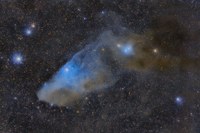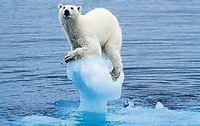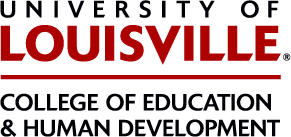- School Groups
- Educator Online Resources
- Educator Benefits
- Dual Field Experiences
- Educator Open House
- Grades 9-12 Field Experience Options
Grades 9-12 Field Experience Options
Two field experiences: $14/student:
Spend the day on campus! Schedule a morning 1.5 hour experience, break for a brown bag lunch in the planetarium lobby or outside courtyard, and come back into the planetarium dome for a second 1.5 hour experience.
While you're at UofL, take your students on a self-guided tour of campus.
Note: Each field experience ends with star tour, highlighting the constellations visible in the current night sky.
 Gravity, Galaxies, and the Big Bang (1.5 hours):
Gravity, Galaxies, and the Big Bang (1.5 hours):
From the comfort of their planetarium seat, students’ imaginations are stretched as they take a visually-dynamic journey from everyday Earth out into deep space – and back in time – to the early universe formed shortly after the Big Bang. Immersive visualizations enable students to understand the role of gravity in forming our solar system from a disk of dust and gas. They are riveted as they plunge into a simulation of Earth’s formation and early history, delving into the heart of the Sun itself to observe fusion creating heavier elements from hydrogen. Students absorb key concepts such as how the phenomenal force of gravity is the “super glue” of the universe, holding objects in orbit – from the planetary scale of the Earth, to the solar system scale, to the galactic scale, and then to the scale of the entire Universe. As we fly from our little blue marble in the Milky Way to view some of the billions of galaxies in the universe, gravity and energy gave us recent hints in the last couple of decades that our universe model needed tweaking. The view includes the motion of distant galaxies and the composition of matter in the universe – only 5% of which is the ‘normal’ matter we see through our telescopes while the rest is mysterious Dark Matter and Dark Energy. This field experience includes the show Black Holes, which explores these voracious gravity wells and their vital role in galaxy formation. The experience concludes with a short tour of the night sky. NGSS Disciplinary Core Ideas: ESS1.A, ESS1.C, PS2.B
 Global Climate Change(1.5 hours):
Global Climate Change(1.5 hours):
Students climb on board our virtual spaceship to see for themselves how the surface of our Earth is one big interdependent set of systems. Imagery captured by numerous satellites surrounds students, enabling them to absorb difficult-to-understand concepts such as the complex interactions among the Sun’s energy input, the atmosphere, and oceans as well as global climate and its dependencies. Students visually explore climate impacts of natural phenomena such as volcanoes and solar variation as well as human-induced impacts. Our virtual spaceship then leaves Earth behind to explore global climates of neighbors in our solar system, which differ greatly from Earth’s. This exploration includes the show Dynamic Earth, which explores the inner workings of Earth’s climate system. With visualizations based on satellite monitoring data and advanced supercomputer simulations, this cutting-edge production follows a trail of energy that flows from the Sun into the interlocking systems that shape our climate: the atmosphere, oceans, and the biosphere. Audiences will ride along on swirling ocean and wind currents, dive into the heart of a monster hurricane, come face-to-face with sharks and gigantic whales, and fly into roiling volcanoes. The experience concludes with a short tour of the constellations in the night sky as we turn our imaginations outward. NGSS Disciplinary Core Ideas: ESS1.A, ESS1.B, ESS1.C, ESS2.D, ESS3.A, ESS3.C, ESS3.D
Next Generation Science Standards 3-Dimensional Alignment
Each field experience program for school groups targets select Next Generation Science Standards (NGSS). The programs are aligned with elements of all 3 dimensions of NGSS: disciplinary core ideas, science and engineering practices, and crosscutting concepts. The visually rich and engaging experiences supplement your classroom instruction to offer students additional opportunities to consider both science practices as well as relevant larger crosscutting concepts in connection with the core science ideas. Click “NGSS Alignment” below for details.



